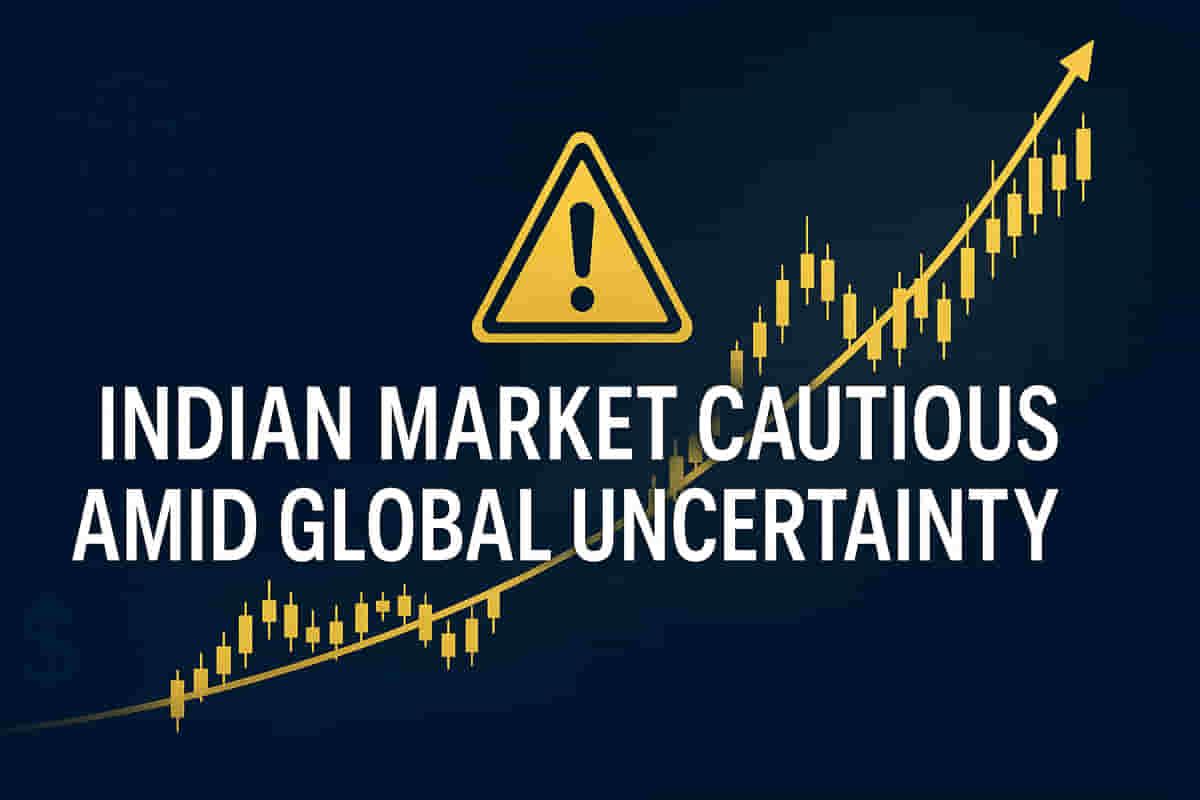Indian Markets Tread Water Amid Cautious Sentiment and Technical Weakness
Economy
|
31st October 2025, 4:29 AM

▶
Stocks Mentioned :
Short Description :
Detailed Coverage :
Benchmark indices like the S&P BSE Sensex and NSE Nifty50 opened flat on Friday, continuing a pattern of volatility. This is occurring despite supportive factors such as strong corporate earnings and easing global trade tensions. The S&P BSE Sensex edged up by 21.15 points to 84,425.61, and the NSE Nifty50 rose by 7.35 points to 25,885.20.
Analysts attribute the cautious sentiment primarily to the outcome of the US-China trade summit. Dr. VK Vijayakumar, Chief Investment Strategist at Geojit Financial Services, noted that the summit resulted in a one-year truce rather than a structural breakthrough, disappointing market participants. While there is relief over declining trade tensions, the lack of a definitive resolution tempers enthusiasm.
The domestic market is also facing resistance at higher levels, with the Nifty repeatedly losing momentum as it approaches its record high. A significant factor contributing to this is renewed selling by foreign institutional investors (FIIs). These overseas investors perceive Indian valuations as stretched relative to earnings growth. This view is expected to change only when leading indicators show a sustained recovery in earnings.
On the technical front, the market tone is turning cautious. Anand James, Chief Market Strategist at Geojit, observes that what initially seemed like a bullish continuation pattern on the Nifty is now showing signs of evolving into a topping pattern. He highlighted underlying weakness, noting that a recent fall to 25,886 underscores this. James anticipates initial upswings may struggle near 25,960, with a failure to overcome this zone potentially leading to a decline toward 25,700–25,400. A sharp rise above 25,960 could delay the decline, but a rapid rebound seems unlikely.
Overall, traders are navigating a market that is neither correcting decisively nor breaking out convincingly, existing in a holding pattern influenced by valuation worries, foreign flows, and the absence of strong directional triggers.
Impact: The current sentiment and technical indicators suggest a period of consolidation or potential downside for the Indian stock market in the near term. Investor caution is likely to persist until clearer positive triggers emerge, such as sustained earnings growth or a definitive resolution to global trade issues. The selling pressure from FIIs could also weigh on market sentiment. The potential for sideways movement or a minor correction makes this news moderately important for investors looking to make short-to-medium term decisions. Impact Rating: 6/10
Terms Used: Benchmark indices: Major stock market indexes like the S&P BSE Sensex and NSE Nifty50 that represent the overall market performance. Volatility: Rapid and significant price fluctuations in the market. Corporate earnings: The profits reported by companies over a specific period. Global trade tensions: Disputes and conflicts between countries regarding trade policies and practices. Broader market indices: Stock market indexes that track a larger portion of the stock market than just the top companies. Sentiment: The general mood or attitude of investors towards the market or specific assets. US–China trade conflict: Trade disputes between the United States and China involving tariffs and other trade barriers. Structural breakthrough: A fundamental and lasting solution to a problem, rather than a temporary fix. Market participants: Individuals, institutions, or groups involved in trading or investing in financial markets. Rally: A period during which the prices of securities increase significantly. Momentum: The speed or force with which prices are moving. Record high: The highest price level a market index or security has ever reached. Foreign institutional investors (FIIs): Overseas entities like mutual funds, pension funds, and hedge funds that invest in the domestic stock market. Short positions: Trades made with the expectation that the price of a security will fall. Valuations: The process of determining the current worth of an asset or company, often by comparing stock prices to earnings or assets. Earnings growth: The increase in a company's profit over a period. Leading indicators: Economic data that tends to change before the rest of the economy, used to forecast future trends. Sustained recovery: A long-term improvement in economic activity or financial performance. Longer horizon: Investing for a distant future, typically many years. Emerging opportunities: New investment possibilities that are becoming available. Maritime infrastructure: Facilities related to sea transportation, ports, and shipping. Shipbuilding: The industry focused on constructing ships. Multi-year growth: Growth expected to occur and be sustained over several years. Technical front: Analysis of market trends based on historical price and volume data. Bullish continuation setup: A chart pattern that suggests an existing upward price trend is likely to continue. Topping pattern: A chart pattern indicating that an upward trend is ending and a downward trend may begin. Underlying weakness: Hidden or less obvious signs of declining strength in the market. Upswings: Upward movements in price. Downside: A downward movement in price. Vertical rebound: A very rapid and steep increase in price. Holding pattern: A period where the market trades within a relatively narrow range without a clear directional move. Valuation worries: Concerns that stock prices are too high compared to the company's financial performance or intrinsic value. Foreign flows: The movement of investment capital into or out of a country's financial markets by foreign investors. Directional triggers: Specific events or factors that can cause a market to move decisively in one direction (up or down).